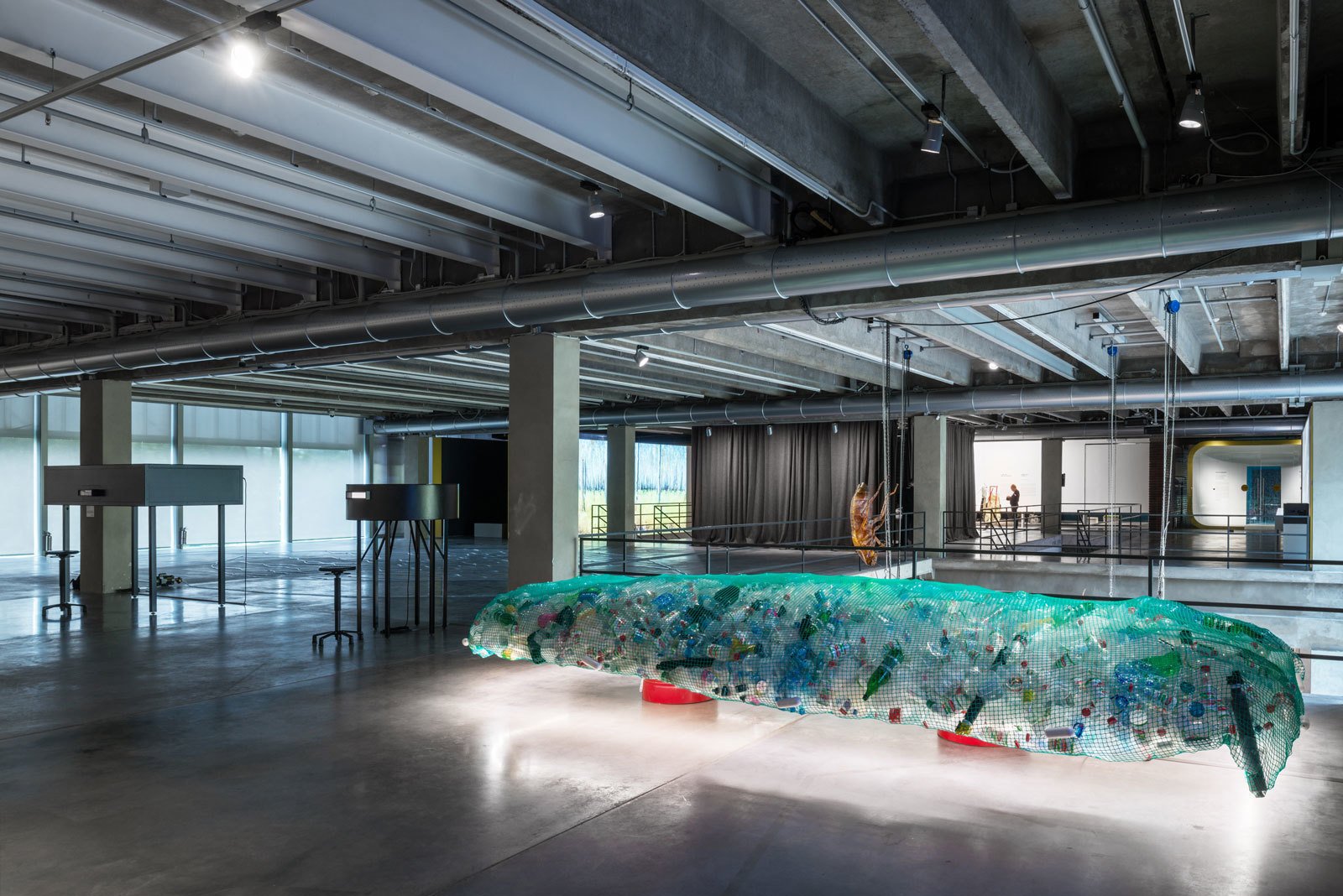Tita Salina
b. 1973, Plaju, Indonesia. Lives and works in Jakarta, Indonesia

1001st Island—The Most Sustainable Island in the Archipelago, 2015
Single-channel video, 14’ 11”; rubbish, fishing net, wood, 540 × 200 × 40 cm
Courtesy of the artist
Indonesian artist Tita Salina built an artificial island from the plastic rubbish she collected off Jakarta’s coast with the help of local fishermen. Setting off on a boat at dawn, she left her symbolic 1001st island to drift among the Thousand Islands, connecting the idea of land reclamation, which is important in the region, with other big issues: the rubbish disaster and the future of traditional fishing.
In fact the Thousand Islands, located to the north of Jakarta, consist of around one hundred tropical islands and coral atolls, some of which form part of a national park that is home to endangered turtles. As a result of rising sea levels and the destruction of the mangrove forests, Indonesia’s islands are becoming submerged and there is a risk that, by 2050, 95% of Jakarta may be flooded due to excessive extraction of groundwater. The Indonesian government is investing in ambitious projects to build artificial islands off the country’s coast, which, according to the experts, may aggravate the region’s ecological problems. 1001st Island—The Most Sustainable Island in the Archipelago is a melancholic, ironic comment on the rhetoric of sustainable development, which often serves economic interests under the guise of “green” rhetoric and concern for the future.